One of the best things about succulents is the wide variety of small ones, so you can make a large collection without taking up a lot of room. Some succulents like snake plants and aloe veras are fairly large, but all you need for dozens of tiny succulents is one sunny windowsill or a small grow light. Sounds tempting? Let’s jump in and take a look at the types of small succulents you can collect.
What Is A Succulent?
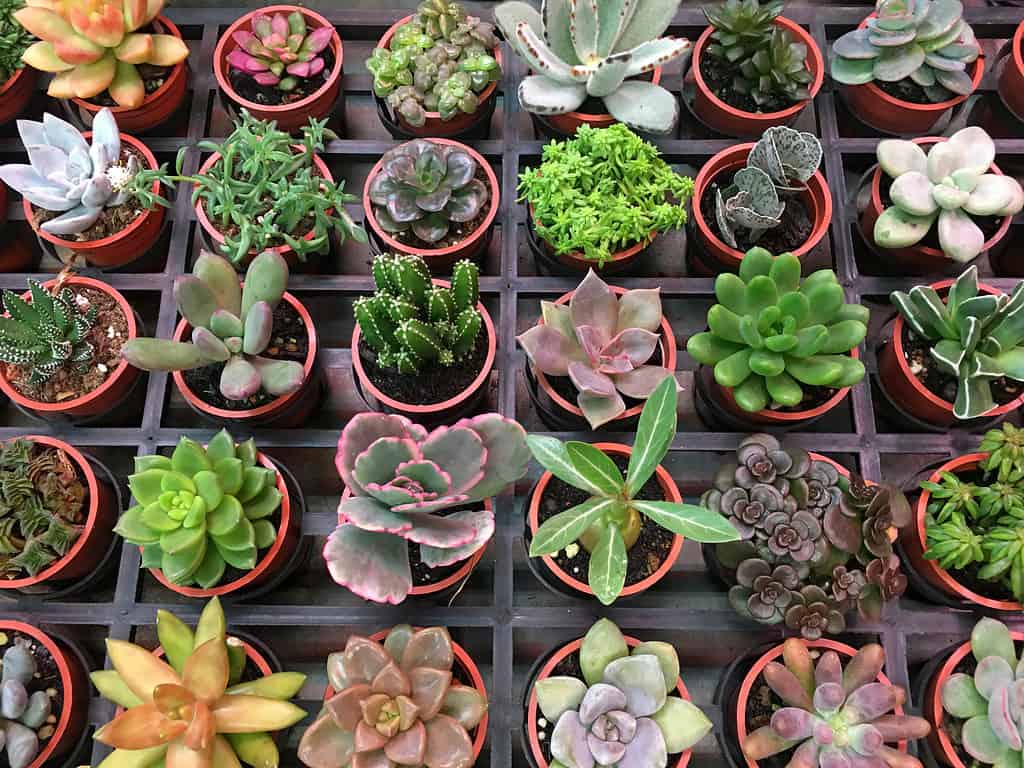
Clean your potted succulents (pictured) by removing dead leaves and dust that accumulate on the plant.
©skywing/Shutterstock.com
But first, what is a succulent? We use this word to describe a perfectly cooked steak, but when it’s applied to plants it means the plant has thick fleshy leaves, body, roots, or stems that store water.
Succulents have this type of water-storing capability because they are drought-tolerant plants. Some even have extra water storage capacities like shallow roots that absorb rainfall before it evaporates in the sun. Another survival technique employed by some small succulents is wrinkled, ridged skin that can inflate like a balloon to quickly grab all the water it can from infrequent downpours.
Succulents grow in every continent except Antarctica and they are very popular with social media-friendly collectors. In South Africa, where 1/3 of all the world’s succulent species grow, some natives are under threat of extinction in the wild due to overzealous black market collectors and invasive mining works that destroy habitats.
What Types of Small Succulents Are There?
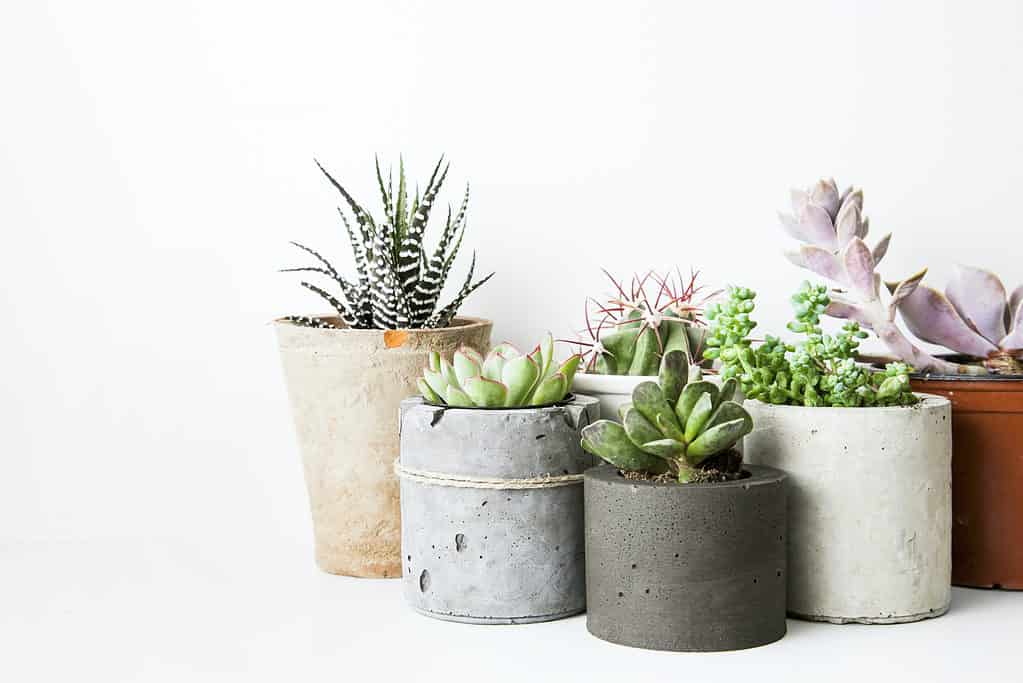
Succulents (pictured) are great beginner plants because they are resilient and low maintenance.
©Julia Karo/Shutterstock.com
There are hundreds of small succulent types and that’s why they are so collectible! It would be impossible to list them all, so here are some of the most popular and unusual small succulents.
Echeveria Amoena
This is a pretty mini echeveria succulent with chunky water-filled leaves that are green with a red-blushed margin. It reaches about two inches in height and width at its maximum size. In summer, given the right conditions, it throws up a five-inch stem with yellow-orange flowers.
Blossfeldia Liliputana
Native to Bolivia this clump-forming cactus succulent forms a single rounded clump about half an inch tall and wide. Individual clumps are covered in small white areoles and fine soft needles. They can be broken off to start an entirely new plant. This one is especially drought-hardy and blooms yellow-white flowers in the hot months.
Gasteria Little Warty
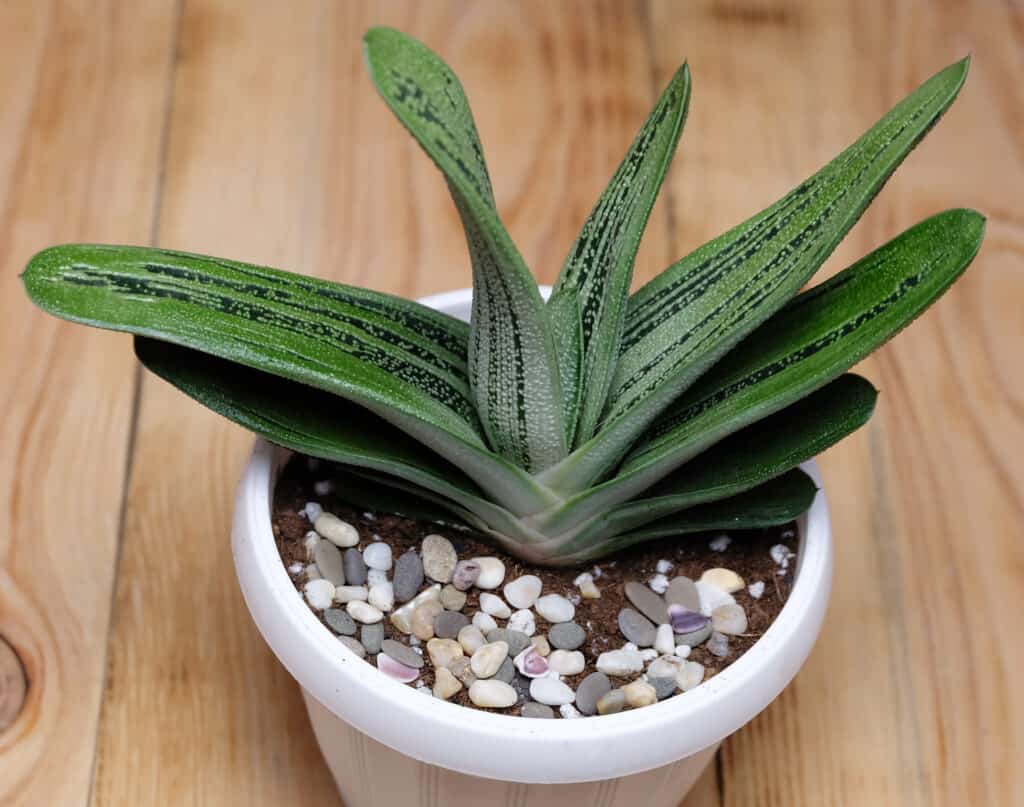
Little Warty is a rosette-forming cultivar with green fleshy leaves that have white speckles and stripes on their margins.
©iStock.com/OllgaP
Gasteria succulents are cheap and cheerful little plants that are ideal for newbie plant owners or kids. Little Warty is a rosette-forming cultivar with green fleshy leaves that have white speckles and stripes on their margins. It’ll reach a maximum of eight inches tall and wide and if the conditions are right, a tall slender flower stem topped with orange blooms in summer.
Karoo Rose
A huge favorite with succulent collectors, the Karoo rose is a South African native. It has rounded rock-like grey-green leaves that emerge from the ground like a Minecraft build rather than a stem (the Karoo rose has no stem!) It has bright yellow dandelion-type flowers in summer.
Conophytum calculus
Better known as Marble Buttons this is a South African native and as you may have guessed, it resembles small marble buttons.
It emerges from the ground in two yellow-green halves that fuse to form a smooth sphere. They are fascinating and only reach 1.2 inches in diameter. In summer a tiny single orange flower emerges from the very top resembling a frilly wig. Why not add googly eyes?
Haworthia Cooperi: The Transparent Succulent
Haworthia succulents are some of the most common and no collection is complete without one, but this is a really unusual small haworthia succulent because it has see-through leaves!
Its thick fleshy leaves are very slow growing and they emerge bluish-green in a clump of rosettes. On the edge of each thick leaf, the skin is transparent! In summer 12-inch tall flower spikes display white-pink flowers. This one is a real show-stopper.
Lithops: Living Stones
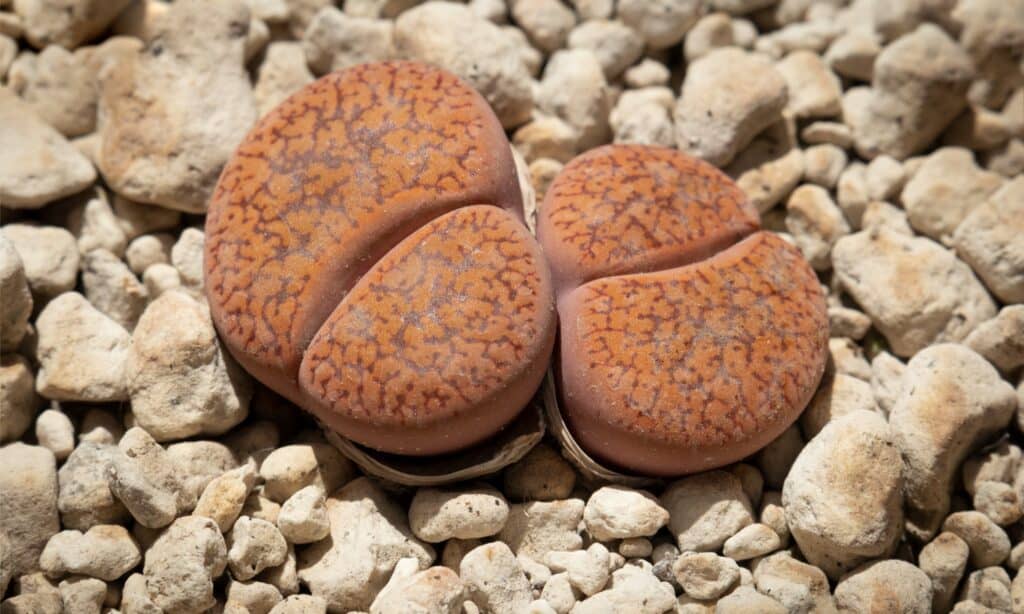
Living stones emerge from the ground without a stem and the leaf splits down the center.
©iStock.com/PicturePartners
Lithops are a type of small succulent that looks just like a deer or cow’s hoof. They reach less than an inch in height and are easily mistaken for pebbles in their native South African habitat. Living stones emerge from the ground without a stem and the leaf splits down the center.
Their disguise is disrupted in the hot months when a single dandelion-type flower emerges from the center split to attract pollinators.
Sempervivum Cobweb Houseleek
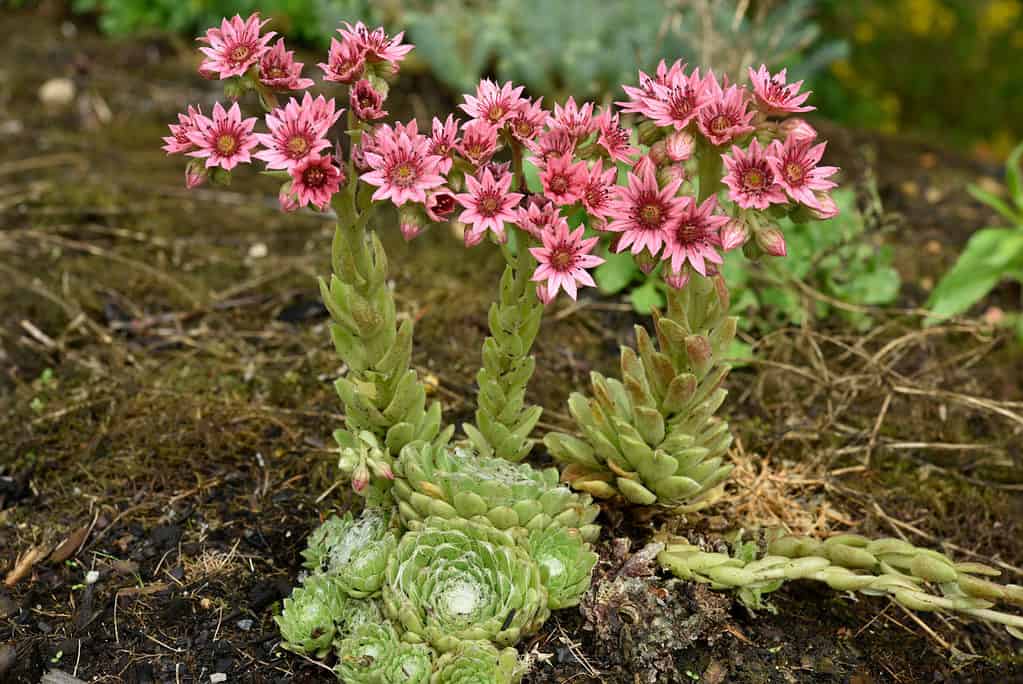
A cobweb sempervivum is very easy to identify because it will have a fine web of silky growth across the top of its green-pink rosette foliage.
©COULANGES/Shutterstock.com
Sempervivum means “always living” in Latin which refers to the evergreen foliage of this succulent species.
A cobweb sempervivum is very easy to identify because it will have a fine web of silky growth across the top of its green-pink rosette foliage. The cob webbing is a way to preserve moisture!
In early summer, small hot pink flowers emerge on two to three-inch-long stems.
Hoya Kerrii
This eye-catching small succulent is native to Southeast Asia and is better known as the sweetheart succulent.
Sweetheart succulents have a single heart-shaped leaf that emerges directly from the soil. As you can imagine, it’s a popular Valentine’s gift. They need very little care despite their elegant appearance and only reach five inches tall.
Hardiness Zones for Succulents
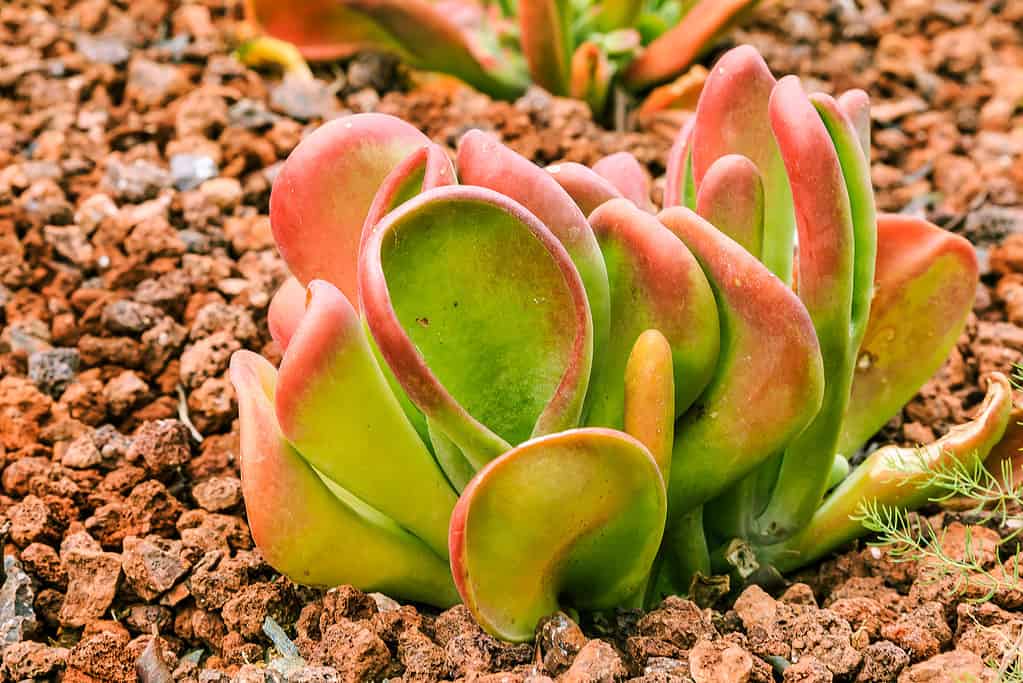
Flapjack plants are succulents that are easy to grow and propagate.
©iStock.com/Marco Ritzki
Succulent hardiness Zones vary depending on the type of plant you have. Always check the label or research its hardiness levels if it’s going to live outside.
Tough succulents like kalanchoe can manage in Zones 3 to 9 if they have very well-drained soil and lots of sunshine. Frost can kill succulents though, so cover them up with horticultural fleece if a cold spell is in the forecast.
Some small succulents are warmth-loving tender plants with types like echeveria only managing to survive in Zone 9. These are called “soft succulents”.
However, if you’re planning to grow types of small succulents indoors, the rules don’t apply and you can collect them all!
Are Cacti Succulents?
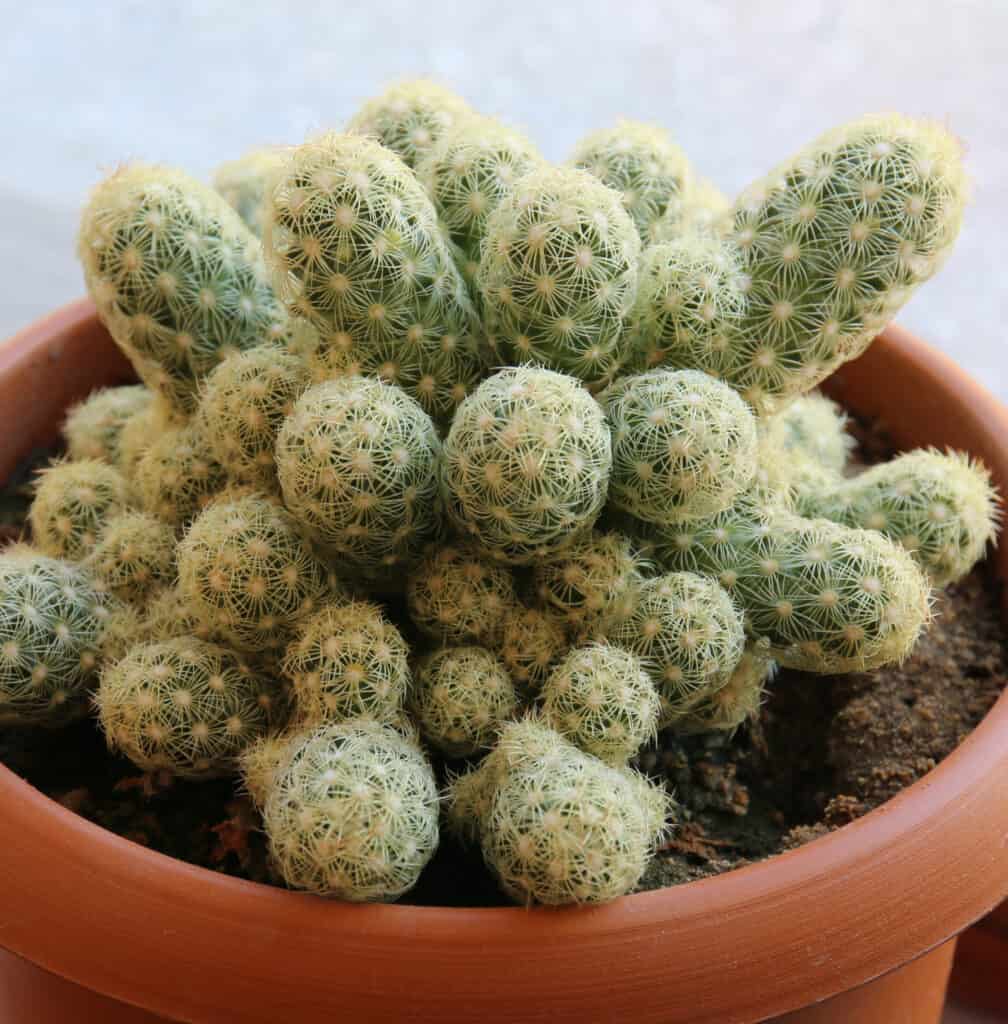
Cacti are technically succulents.
©iStock.com/Yetkin BILGIN
Succulent describes a plant with water-storing parts, so yes a cactus is a succulent plant. However, not all succulents are cacti- read more about their differences here!
What Is The Smallest Succulent?
The smallest succulent species is Blossfeldia liliputana with a diameter of about 12 millimeters.
It can live up to two years without any water, it’s pollinated by ants, and named after the tiny island of Lilliput from Gulliver’s Travels.
How To Look After Small Succulents
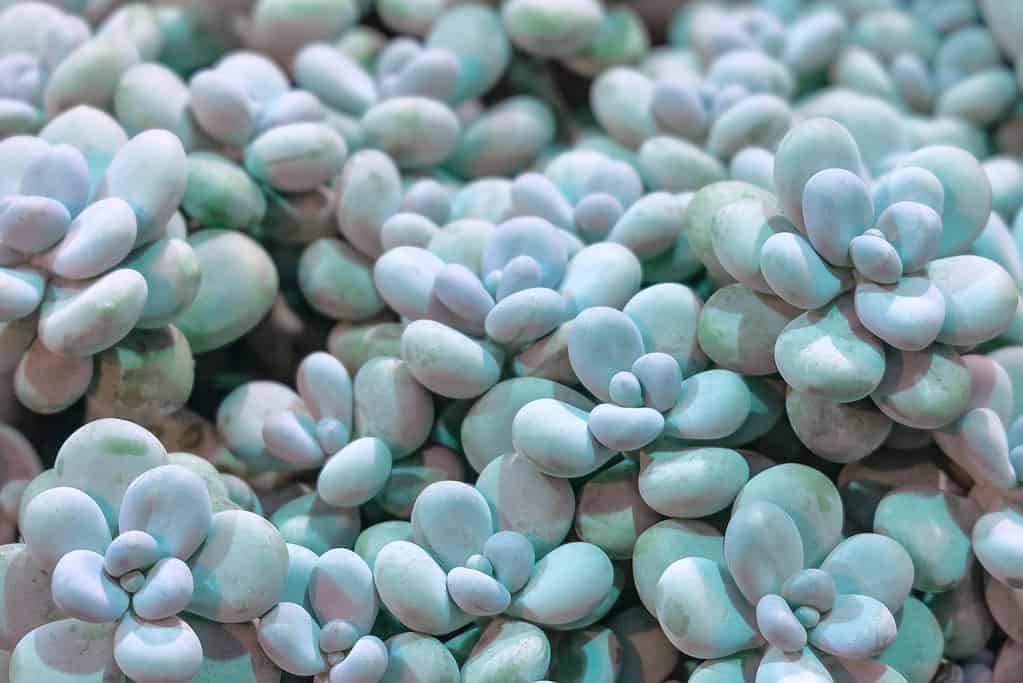
Small succulents will need more regular watering sessions than large succulents simply because they can hold less water in their storage parts.
©iStock.com/TatianaMironenko
There are two things all succulents must have no matter their size. Well-drained roots and lots of sunshine. Here’s how to properly care for your tiny succulent!
Well-Drained Roots
Succulents are water-storing plants that live in dry, arid conditions. This means well-drained soil is a must. Too much moisture around their roots will rot them and eventually kill the entire plant.
It’s possible to buy commercial succulent potting compost for types of small indoor succulents but outside, add plenty of sand, gravel, or perlite to their container or flower bed.
Small succulents will need more regular watering sessions than large succulents simply because they can hold less water in their storage parts.
Allow them to soak for an hour in a shallow sink of water, drain the roots clear of excess water, then pop them back on display. They only need watering when the soil is dry on top.
Lots of Light
Succulents need lots of light, at least six hours of indirect daylight every day, to really thrive. In the yard, they can grow in a sun-filled flower border or even between paving slabs, but direct sunlight magnified by a window pane will burn succulent foliage.
Other top tips are turning the plant each week to make sure all sides get enough light, (which will stop it from leaning) and going easy on the fertilizer. Succulents need very little fertilizer and only in the growing months.
Can Small Succulents Survive Two Weeks Without Water?
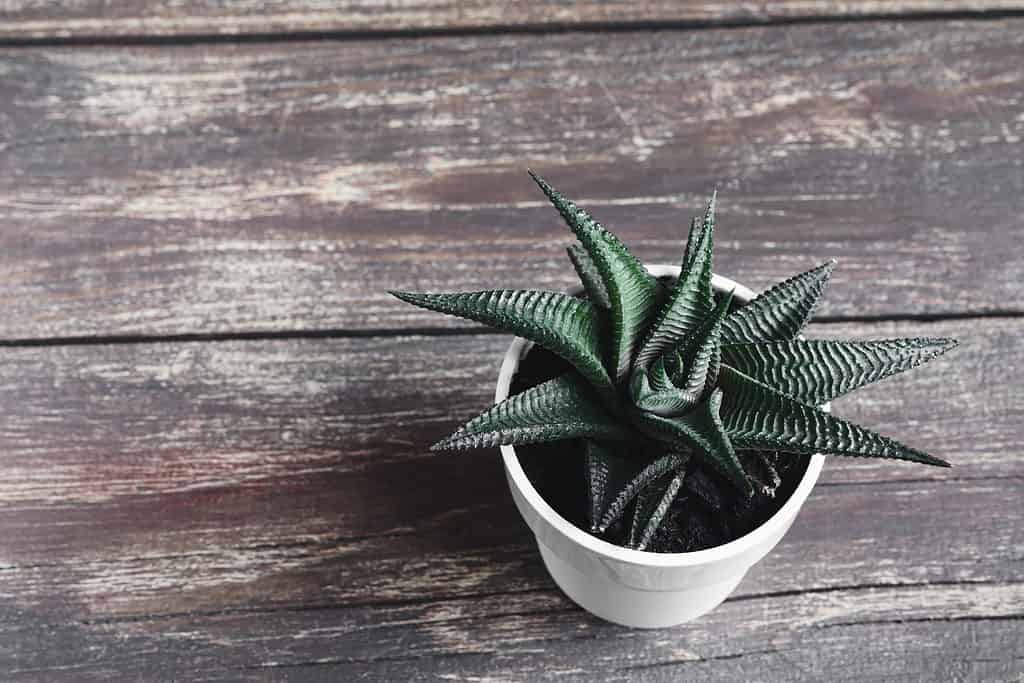
Succulents need lots of light, at least six hours of indirect daylight every day, to really thrive.
©iStock.com/t sableaux
Yes, they certainly can so you can go on holiday without fear. Just pop them in a warm, indirectly lit spot after a soak and they’ll be waiting for you on return.
This is one of the reasons why small succulents are so popular, you barely have to do a thing with them!
Which Are the Best Types of Small Succulents?
It depends on where you’re going to grow them.
The best small succulents for cool areas are tougher succulents like kalanchoe that can cope with colder climates, but if you’re growing them indoors it’s all down to your personal preference and style. Thankfully, there are plenty of succulents to choose from!
Up Next
- Types of Flowering Succulents
- Types Of Hen and Chicks Succulents
- Are Succulents Poisonous To Dogs or Cats?
The photo featured at the top of this post is © iStock.com/NooUma
Sources
- RHS, Available here: https://www.rhs.org.uk/plants/types/cacti-succulents/houseplants
- National Geographic, Available here: https://www.nationalgeographic.com/animals/article/tiny-succulents-are-under-siege-from-international-crime-rings
Thank you for reading! Have some feedback for us? Contact the AZ Animals editorial team.






